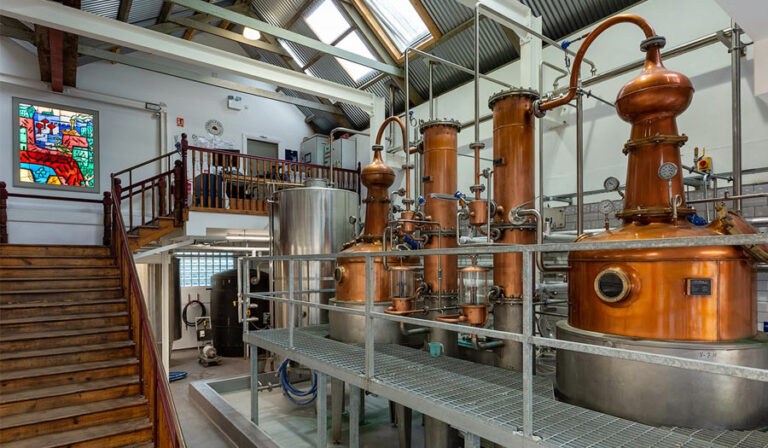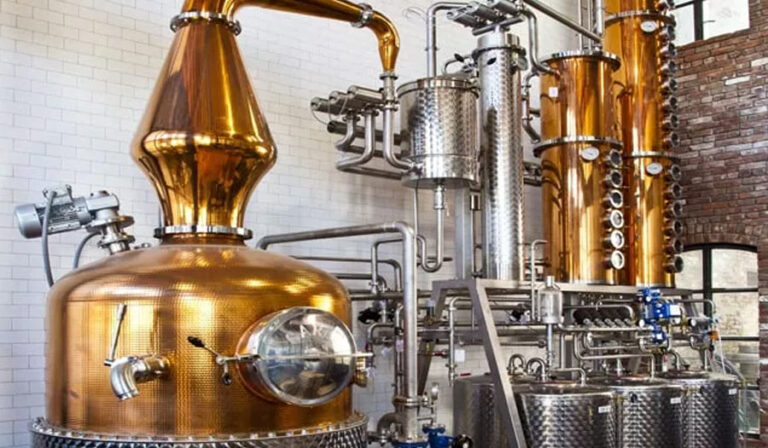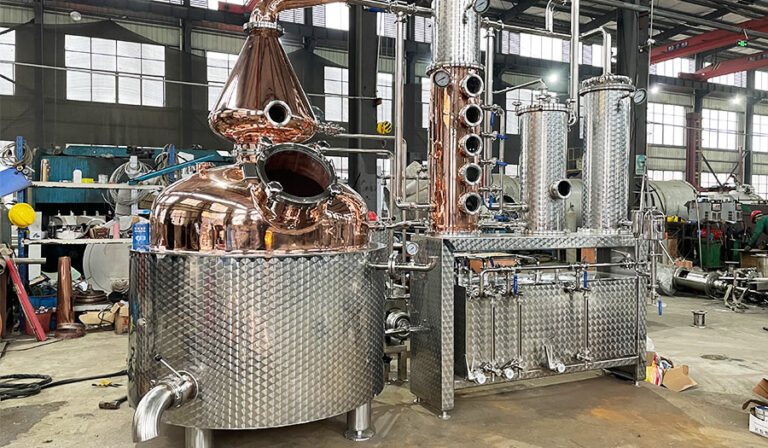
Brewing plant site selection planning
- Convenient raw material supply: close to grain growing areas such as barley to ensure that fresh and high-quality raw materials can be supplied in time, reducing transportation costs and time. At the same time, it is convenient to establish a close cooperative relationship with raw material suppliers to ensure the stable supply and quality control of raw materials.
- Good water quality: High-quality water source is one of the key factors in brewing whiskey. Choose an area with abundant water sources, pure water quality, moderate hardness, and no odor, and pollution. It is best to have artesian springs or deep well water sources, and their water quality characteristics have an important influence on the flavor formation of whiskey. For example, mineral-rich water may give whiskey a unique taste.
- Convenient transportation: The brewery should have good transportation conditions to facilitate the transportation of raw materials and the output of finished products. Being close to transportation hubs such as highways, railways or ports is conducive to reducing logistics costs and improving transportation efficiency. At the same time, it is also convenient for employees to commute and customers to visit.
- Suitable environment: Choose an area with a beautiful environment, fresh air, and no pollution. A good natural environment is not only conducive to the sanitary control of the brewing process but also creates a unique atmosphere for the brewing of whiskey. In addition, avoid choosing a noisy location, has strange smells, or has other sources of pollution, so as not to affect the quality of the whiskey.
Distillation Equipment Purchase
Pot Stills
Pot stills are traditional equipment for whiskey brewing and are essential for breweries that pursue traditional flavors and high quality. It consists of a still, a swan neck, a lynn arm, and a condenser. Stills are usually made of copper or stainless steel. Copper has good thermal conductivity and catalytic effect, which can promote some chemical reactions and help give whiskey a unique flavor. However, copper still has high maintenance costs and needs to be cleaned and maintained regularly to prevent the formation of verdigris.
Continuous Stills
Continuous stills are suitable for large-scale production and can improve production efficiency and output. It consists of multiple distillation towers and performs distillation operations by continuous feeding and discharging.
The advantages of continuous stills are stable production processes and the ability to accurately control distillation temperature and time, thereby producing whiskeys with higher purity and lighter taste. However, compared with pot stills, the whiskeys produced by them may lack some of the complex flavors and personalities brought by traditional pot stills.
Malt Crusher
Crush the malt into a suitable particle size for the subsequent saccharification process. The crushing effect of the grinder will affect the mash efficiency and the quality of the wort.
Mash pot
Fermentation equipment
The fermentation tank is generally made of stainless steel, which has good corrosion resistance and hygienic properties. The capacity of the fermentation tank should be selected according to the production scale, and it should be equipped with a stirring device, a temperature control system, and a pressure monitoring device to ensure the uniformity, temperature control, and safety of the fermentation process.

How to choose distillation equipment?
Production scale
According to the production plan and market demand of the brewery, determine the production capacity of the required distillation equipment. If the output is large, it is necessary to select distillation kettles, distillation towers, and related supporting equipment with large capacity and strong processing capacity to ensure that the production tasks can be met. For example, a large brewery may need to process several tons or even tens of tons of raw materials every day. At this time, it is necessary to equip large distillation equipment, and multiple sets of equipment may be required to run in parallel to improve production efficiency.
Material properties
Product quality requirements
Heating methods
- Steam heating is a more traditional and commonly used heating method, which has the advantages of uniform heating, easy temperature control, and high thermal efficiency. When there is a steam supply, steam heating can reduce energy costs. However, steam heating requires equipment such as steam generators or boiler rooms, the investment cost is relatively high, and there are certain requirements for the pressure and stability of steam.
- Electric heating has the advantages of cleanliness, convenience, and high control accuracy, and is suitable for some small-scale breweries or occasions with high heating accuracy requirements. However, the cost of electric heating is relatively high, especially in areas with high electricity prices, which may increase production costs.
- Gas heating has the advantages of fast heating speed and relatively low cost, but it needs to be equipped with gas pipelines and corresponding safety equipment. When choosing gas heating, pay attention to the quality and supply stability of the gas, as well as the combustion efficiency and safety of the equipment.

FAQ
What should be paid attention to when starting the distillation equipment?
Before starting, check whether the connection parts of the equipment are well sealed and whether the instrument displays normally, ensure that the cooling system, heating system, etc. are in normal working condition, and then start the equipment step by step according to the operating procedures.
How often does the distillation equipment need to be fully maintained?
Generally, comprehensive maintenance is performed once a year, including checking the main structure of the equipment, cleaning internal dirt, verifying safety accessories, checking the electrical system, etc.
How to clean the inside of the distillation equipment?
For the distillation kettle and distillation tower, after the operation is completed and cooled, they can be rinsed with a suitable solvent or clean water. For severe scaling, chemical cleaning agents can be used, but attention should be paid to the selection of cleaning agents to avoid damage to the equipment.

